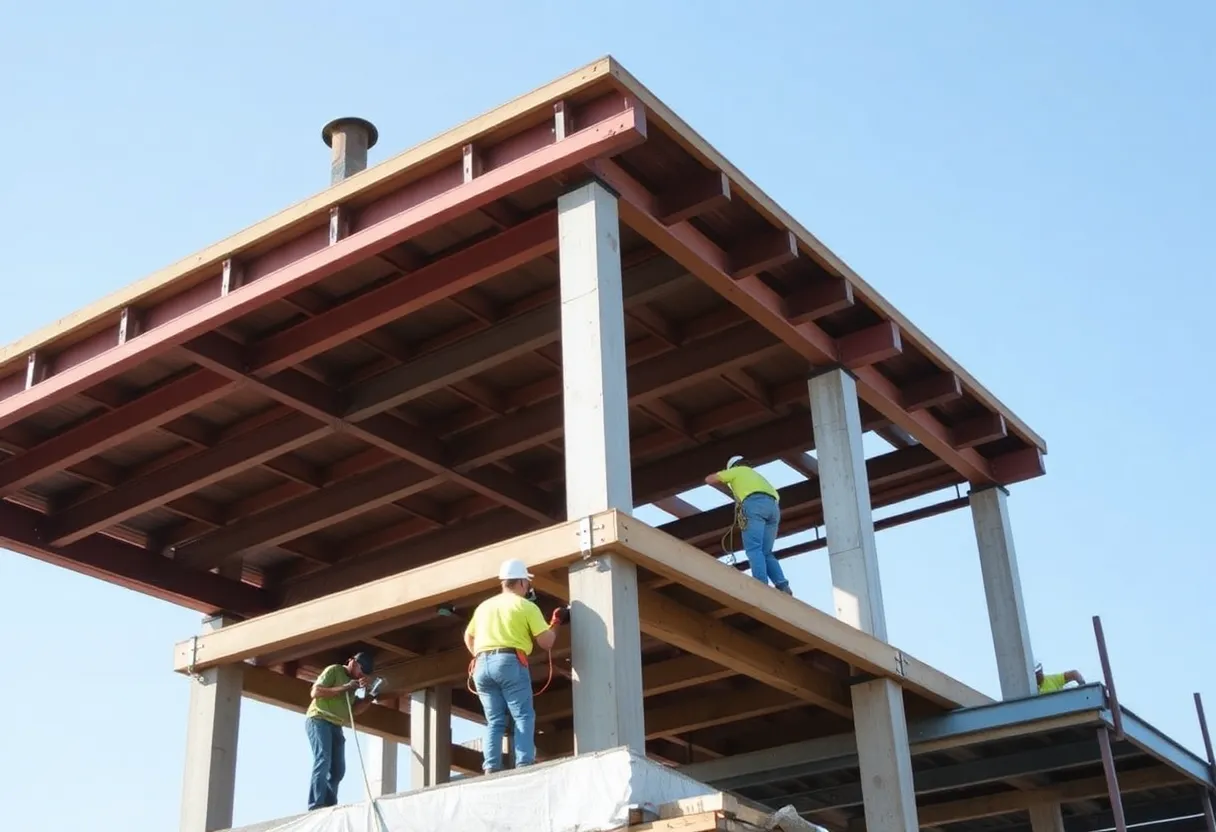United States, September 29, 2025
News Summary
Rents have cooled across much of the country as a large wave of new apartment supply and softer demand ease upward pressure on prices. The national median one-bedroom holds near $1,517 while two-bedrooms sit near $1,894, leaving overall rents about 1% below year-ago levels. At the same time median home prices continue modest gains, complicating the rent-versus-buy decision for many households. Markets with heavy new deliveries show the biggest declines, while a major West Coast tech city stands out with double-digit rent growth driven by strong hiring and constrained new construction.
Rents Flat or Falling Nationwide for Third Month; San Francisco Stands Out with Double‑Digit Gains
Key takeaway: Nationwide rent figures showed a third straight month of stability or decline in September 2025, with the median one‑bedroom holding steady at $1,517 and the median two‑bedroom dipping slightly to $1,894. Overall, rents are down about 1% year‑over‑year. At the same time, median home prices rose by 2% year‑over‑year to $422,600, marking more than two years of consecutive annual gains for home values.
What the latest data shows
The national rent trend is clear: many cities are seeing little to no upward pressure on rents, and some are seeing sharp declines. A review of 100 U.S. cities found rents were flat or down in more than 70 of those markets. The median one‑bedroom rent nationwide remained at $1,517 in September 2025, while the median two‑bedroom slipped by 0.2% to $1,894. Despite this short‑term cooling, home prices continued to post year‑over‑year growth.
Why rents are softening
Analysts point to three main pressures behind the cooling rental market: a sluggish labor market that is weighing on renter mobility and hiring; wider economic concerns reducing household willingness to move or upgrade; and a large wave of apartment construction that flooded many markets with new units after record deliveries last year. Nationally, new apartment construction is on track to surpass 500,000 units by the end of 2025.
Where rents are falling the most
Markets with the heaviest new‑apartment deliveries tended to see the largest declines. Examples include southern and mountain cities that added large amounts of new supply in 2025. Select moves in some cities have been dramatic: one‑bedroom averages dropped nearly 18% in one market, while several Midwestern cities posted annual declines greater than 12%. Miami’s market, where a large number of new units are scheduled for delivery, has seen rents fall by almost 10% year‑over‑year.
Where rents are rising — and why
Not all places are cooling. Some northeastern and rust‑belt cities posted noticeable rent gains. One city recorded the largest national jump for one‑bedrooms with a 16% annual increase to a median of $1,800, while another experienced more than 12% growth since last September. The most striking outlier is one major West Coast city, which is seeing double‑digit rent growth driven by strong local hiring in high‑pay tech sectors and renewed demand for urban living. In that city, the average one‑bedroom now exceeds $3,500, and two‑bedrooms have pushed past $5,000 for the first time in the data series.
Local supply and demand dynamics
In markets with big rent drops, the common link is a surge of new apartments coming online over the past year. In contrast, the West Coast city with surging rents faces low levels of building permits and little new construction, leaving demand to outstrip supply. Local employers in expanding sectors and stricter office attendance policies have nudged more workers back to city centers, boosting demand for nearby rentals. In that city, several neighborhoods recorded double‑digit annual rent increases, led by a neighborhood with more than a 21% jump.
Outlook
Experts expect the rental cooling to continue through the winter, though not necessarily indefinitely. The balance between new supply, hiring trends, and broader economic momentum will determine how long rents remain soft. Home prices, by contrast, have continued a long run of annual increases, complicating decisions for renters who may be weighing whether to buy.
Bottom line
Nationwide rent pressure has eased, driven mainly by a large increase in available apartments and weaker demand in some markets. That has pushed national averages flat or slightly down, even as pockets of strong growth—most notably a major West Coast tech city—show how local job markets and constrained construction can still push rents sharply higher.
Frequently Asked Questions
Q: Are rents falling everywhere in the U.S.?
A: No. While rents are flat or down in more than 70 of 100 tracked cities, some markets are seeing strong growth. Areas with big new apartment deliveries are more likely to see declines, while cities with tight supply and strong local hiring are seeing increases.
Q: Why did national rents cool after rising earlier in 2025?
A: The cooling followed months of construction that added many new units, coupled with a softer job market and broader economic caution among households. Those forces reduced rent growth beginning around mid‑2025.
Q: Will this cooling last?
A: Analysts expect the cooling to persist through the winter months, but it may not be permanent. Changes in hiring, inflation, or new construction pace can shift the trend.
Q: How do home prices compare to rents?
A: Median home prices rose about 2% year‑over‑year to $422,600, remaining on a long run of annual gains. In some places, it remains cheaper to rent than buy, while in others buying is comparatively less expensive.
Q: Why is the West Coast city seeing such big rent increases?
A: The city faces constrained new housing supply, strong hiring in certain high‑pay industries, and policies or employer behavior that are bringing more people back to offices and close‑in neighborhoods—factors that together are boosting rent demand and prices.
{
“@context”: “https://schema.org”,
“@type”: “FAQPage”,
“mainEntity”: [
{
“@type”: “Question”,
“name”: “Are rents falling everywhere in the U.S.?”,
“acceptedAnswer”: {
“@type”: “Answer”,
“text”: “No. While rents are flat or down in more than 70 of 100 tracked cities, some markets are seeing strong growth. Areas with big new apartment deliveries are more likely to see declines, while cities with tight supply and strong local hiring are seeing increases.”
}
},
{
“@type”: “Question”,
“name”: “Why did national rents cool after rising earlier in 2025?”,
“acceptedAnswer”: {
“@type”: “Answer”,
“text”: “The cooling followed months of construction that added many new units, coupled with a softer job market and broader economic caution among households. Those forces reduced rent growth beginning around mid‑2025.”
}
},
{
“@type”: “Question”,
“name”: “Will this cooling last?”,
“acceptedAnswer”: {
“@type”: “Answer”,
“text”: “Analysts expect the cooling to persist through the winter months, but it may not be permanent. Changes in hiring, inflation, or new construction pace can shift the trend.”
}
},
{
“@type”: “Question”,
“name”: “How do home prices compare to rents?”,
“acceptedAnswer”: {
“@type”: “Answer”,
“text”: “Median home prices rose about 2% year‑over‑year to $422,600, remaining on a long run of annual gains. In some places, it remains cheaper to rent than buy, while in others buying is comparatively less expensive.”
}
},
{
“@type”: “Question”,
“name”: “Why is the West Coast city seeing such big rent increases?”,
“acceptedAnswer”: {
“@type”: “Answer”,
“text”: “The city faces constrained new housing supply, strong hiring in certain high‑pay industries, and policies or employer behavior that are bringing more people back to offices and close‑in neighborhoods—factors that together are boosting rent demand and prices.”
}
}
]
}
Key figures at a glance
| Metric | National | Fast‑growing City | Examples of Big Declines |
|---|---|---|---|
| Median one‑bedroom rent (Sept 2025) | $1,517 | $3,510 | Cities with heavy new supply; examples include markets with drops near 18% and several with declines over 12% |
| Median two‑bedroom rent (Sept 2025) | $1,894 | >$5,000 | |
| Year‑over‑year rent change (national) | -1% | +13% (approx.) | Miami: ≈ -10% |
| Median home price (Sept 2025) | $422,600 (up 2% y/y; 26th consecutive month of y/y gains) | ||
| Projected new apartments (2025) | 500,000+ units nationally by year end; Miami expected to deliver ~15,666 units by January in its market | ||
Deeper Dive: News & Info About This Topic
Additional Resources
- SF Standard: SF real estate affordability increases, bucking trend
- Wikipedia: Housing in San Francisco
- KTVU: SF rental prices — Zumper
- Google Search: San Francisco rental prices 2025
- San Francisco Chronicle: Apartment rent trends in SF
- Google Scholar: San Francisco rents 2025
- SFGate: San Francisco neighborhood rent surge
- Encyclopedia Britannica: San Francisco rental market
- Axios: San Francisco AI hiring and rent spike
- Google News: San Francisco AI hiring rent spike
Author: Construction FL News
The FLORIDA STAFF WRITER represents the experienced team at constructionflnews.com, your go-to source for actionable local news and information in Florida and beyond. Specializing in "news you can use," we cover essential topics like product reviews for personal and business needs, local business directories, politics, real estate trends, neighborhood insights, and state news affecting the area—with deep expertise drawn from years of dedicated reporting and strong community input, including local press releases and business updates. We deliver top reporting on high-value events such as the Florida Build Expo, major infrastructure projects, and advancements in construction technology showcases. Our coverage extends to key organizations like the Associated Builders and Contractors of Florida and the Florida Home Builders Association, plus leading businesses in construction and legal services that power the local economy such as CMiC Global and Shutts & Bowen LLP. As part of the broader network, including constructioncanews.com, constructionnynews.com, and constructiontxnews.com, we provide comprehensive, credible insights into the dynamic construction landscape across multiple states.





